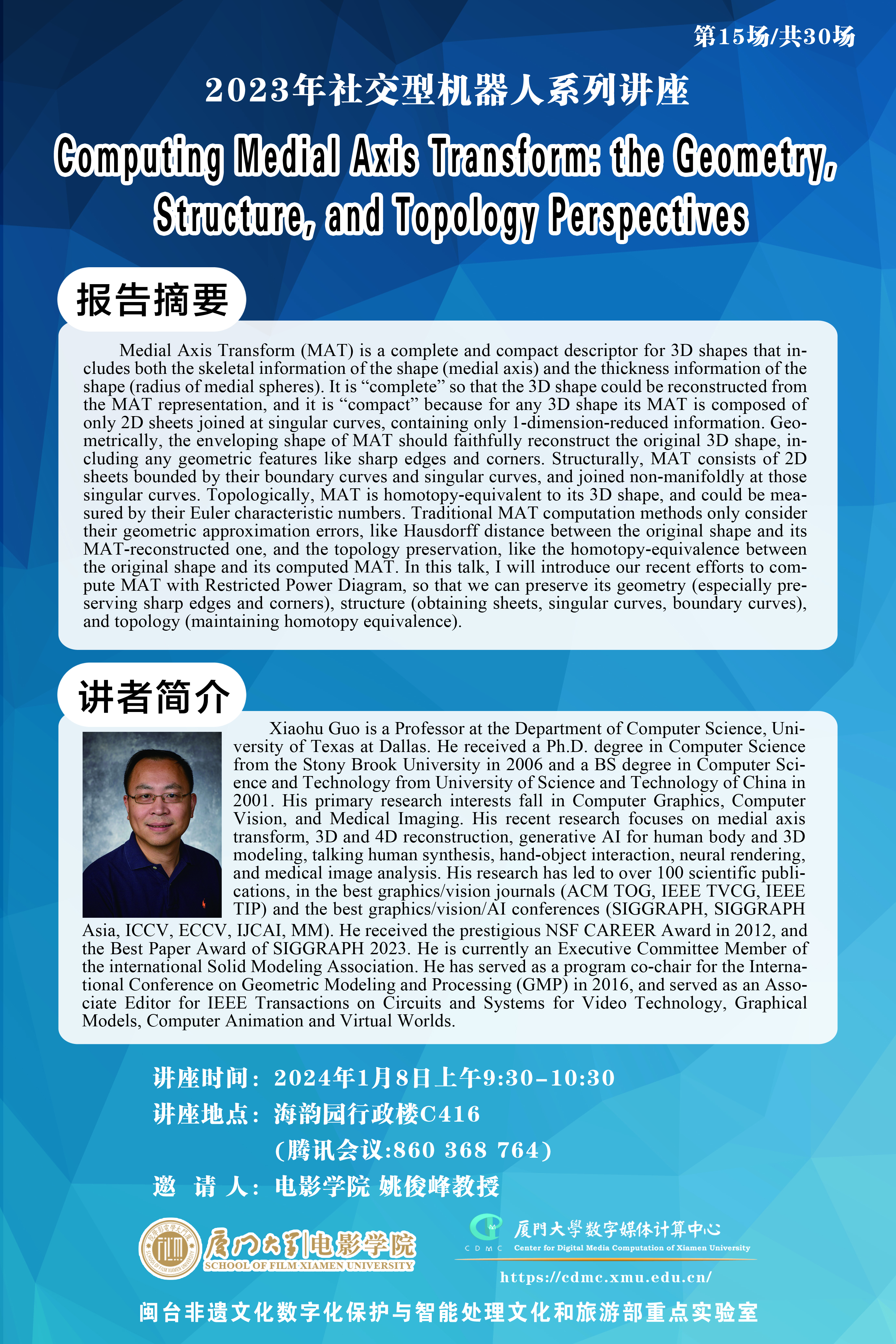【报告摘要】
Medial Axis Transform (MAT) is a complete and compact descriptor for 3D shapes that includes both the skeletal information of the shape (medial axis) and the thickness information of the shape (radius of medial spheres). It is “complete” so that the 3D shape could be reconstructed from the MAT representation, and it is “compact” because for any 3D shape, its MAT is composed of only 2D sheets joined at singular curves, containing only 1-dimension-reduced information. Geometrically, the enveloping shape of MAT should faithfully reconstruct the original 3D shape, including any geometric features like sharp edges and corners. MAT structurally consists of 2D sheets bounded by their boundary and singular curves and joined non-manifoldly at those singular curves. Topologically, MAT is homotopy-equivalent to its 3D shape and could be measured by their Euler characteristic numbers. Traditional MAT computation methods only consider their geometric approximation errors, like the Hausdorff distance between the original shape and its MAT-reconstructed one, and the topology preservation, like the homotopy equivalence between the original shape and its computed MAT. In this talk, I will introduce our recent efforts to compute MAT with a Restricted Power Diagram, so that we can preserve its geometry (especially preserving sharp edges and corners), structure (obtaining sheets, singular curves, boundary curves), and topology (maintaining homotopy equivalence).
【讲者简介】
Xiaohu Guo is a Professor at the Department of Computer Science, University of Texas at Dallas. He received a Ph.D. degree in Computer Science from Stony Brook University in 2006 and a BS degree in Computer Science and Technology from the University of Science and Technology of China in 2001. His primary research interests are Computer Graphics, Computer Vision, and Medical Imaging. His recent research focuses on medial axis transform, 3D and 4D reconstruction, generative AI for the human body and 3D modeling, talking human synthesis, hand-object interaction, neural rendering, and medical image analysis. His research has led to over 100 scientific publications, in the best graphics/vision journals (ACM TOG, IEEE TVCG, IEEE TIP) and the best graphics/vision/AI conferences (SIGGRAPH, SIGGRAPH Asia, ICCV, ECCV, IJCAI, MM). He received the prestigious NSF CAREER Award in 2012, and the Best Paper Award of SIGGRAPH 2023. He is currently an Executive Committee Member of the International Solid Modeling Association. He has served as a program co-chair for the International Conference on Geometric Modeling and Processing (GMP) in 2016 and served as an Associate Editor for IEEE Transactions on Circuits and Systems for Video Technology, Graphical Models, Computer Animation, and Virtual Worlds.
讲座时间:2024年1月8日上午9:30-10:30
讲座地点:海韵园行政楼C416,腾讯会议860 368 764
邀请人:电影学院 姚俊峰教授







